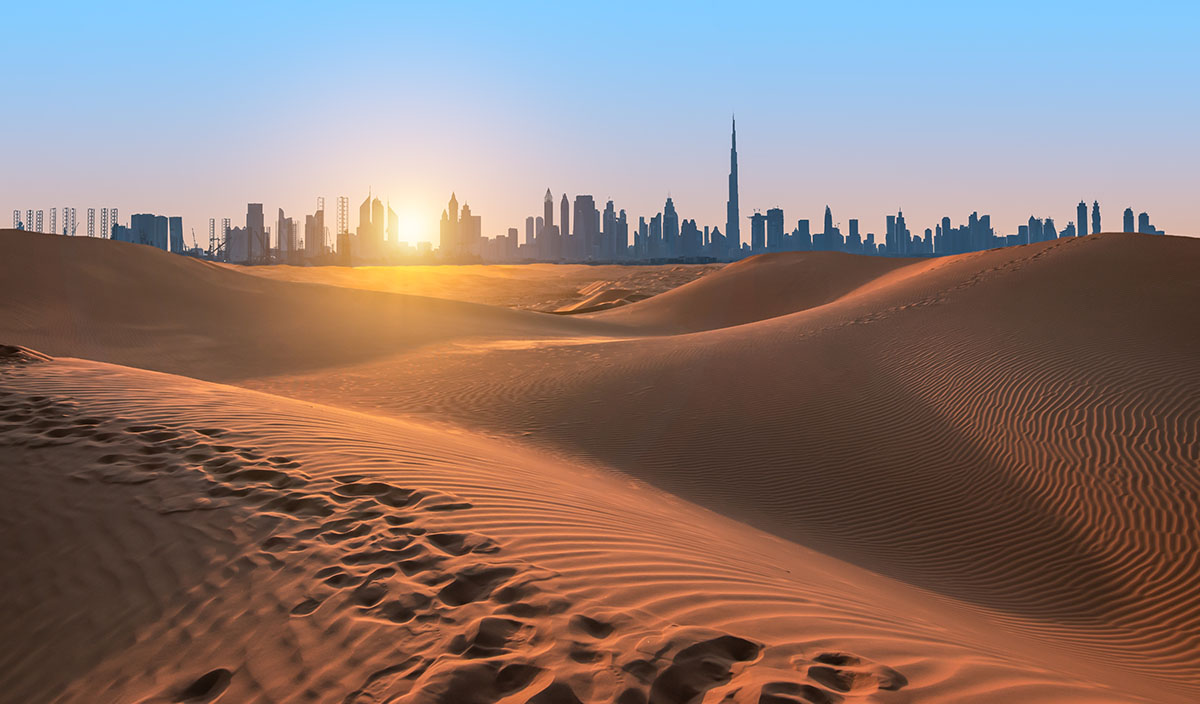The United Arab Emirates has announced several initiatives that have been put in place to protect the nation’s architectural heritage sites. The nation is already known for some of the most iconic modern architectural, most notably the Bourj Khalifa. The United Arab Emirates Department of Culture and Tourism, Abu Dhabi, recently launched the Modern Heritage Conservation Initiative. The initiative lists 64 buildings and heritage sites to be preserved, maintained, and rehabilitated. Further, the buildings listed will not be demolished. The UAE Ministry of Culture and Youth also inaugurated a program titled, “Architectural Heritage of the UAE,” which aims to protect 1960s architecture. The project will research, document, conserve, and preserve heritage sights from the last century.
Modern Heritage Conservation Initiative
Abu Dhabi’s Al Manhal Palace is one of the buildings added to the list. The palace is the setting where the UAE flag was raised after the country joined the United Nations in 1971. Zayed Sports City is another designated site to be protected.
Mohamed Khalifa Al Mubarak, Chairman of DCT Abu Dhabi, said, “Our architectural and urban heritage is an extremely important element of our recent history, which deserves to be recognised and protected. It is our civic responsibility to guard this modern heritage, not only because of the value it holds in our collective memory as residents of this emirate, but because of the historical testimony it has in telling Abu Dhabi’s story through architectural and urban identity between the traditional past and our aspirations for the future.”
The list also includes, but is not limited to: Cultural Foundation, Zayed bin Sultan The Second Mosque, The National Theatre, Al Jahili Eid Prayer Grounds, Al Khalidiyah Park, Al Bateen Mall, Hili Old Market (Shaabi Market), Al Maqta Conservation Area, Bida’ Zayed Central Souq, Arab Monetary Fund Building, Etisalat Headquarters – Abu Dhabi, Federal National Council, Saeed Al Kalili (Al Ibrahimi Building), Obaid Al Mazrouai, Sheraton Hotel, Le Meridien Hotel, Al Ghaf Tree Park, Airport Road Park, Al Omeirah Building (Adidas), Bida’ Zayed Pool, Liwa Rest House, Remah Rest House complex, Salman Khalifa Al Mazroei, Otaiba Building, Mesaied Khalid Al Mansoori, The Central Bank of the UAE, City Terminal (Abu Dhabi International Airport), Abu Dhabi City Municipality Building, Department of Economic Development, Department of Finance, Abu Dhabi Media Company, Abu Dhabi Oil Co. – Japan (ADOC), Al Zaab Old Fire Station, Khalifa Al Suweidi Building, Elenco Building, Madinat Zayed Vegetable, Meat & Fish Market – Abu Dhabi, Abu Yalee Mosque, Al Ain Old Gold Souk, Al Nyadat Eid Musalla.

Read more: Dubai sees completion of 9 real estate projects worth AED4.06 bn in H1 2023
Architectural Heritage of the UAE
The program is a result of the UAE’s Ministry of Culture and Youth desire to preserve important UAE architecture. The designated sites are mostly landmarks and communal spaces that have emerged since the 1960s, before the UAE was unified. The sits chosen will be safeguarded and preserved for research, documentation, and conservation. The Ministry aims to establish the UAE as a country on the global architectural map, hoping to offer visitors an enriched cultural and design-focused experience.
Consequently, the preservation sites include: Dubai’s Deira Clocktower, Dubai World Trade Centre, Abu Dhabi’s iconic Bus Terminal and National Theatre, Sharjah’s Al-Qasimiyah School and the Flying Saucer roundabout, Fujairah’s Trade Centre and International Airport, Ajman’s Independent Studios and Clock Square, Ras al Khaimah’s Saqr Hospital, and Umm Al Quwain’s Al Arabi Cultural Sports Club.
For more news on the United Arab Emirates, click here.








